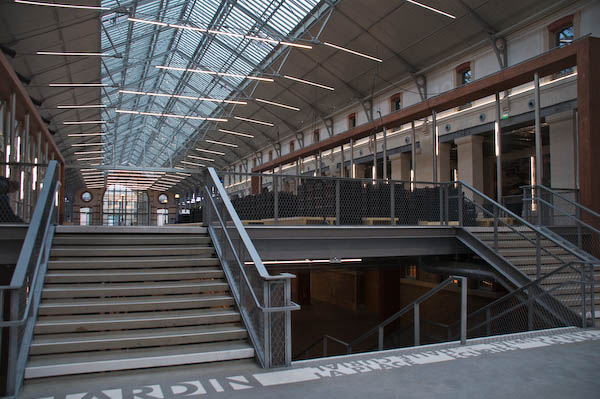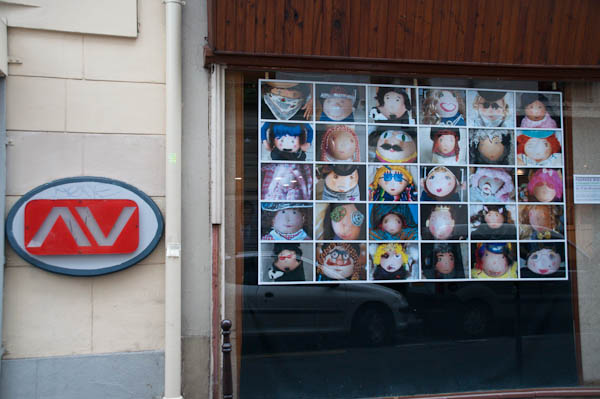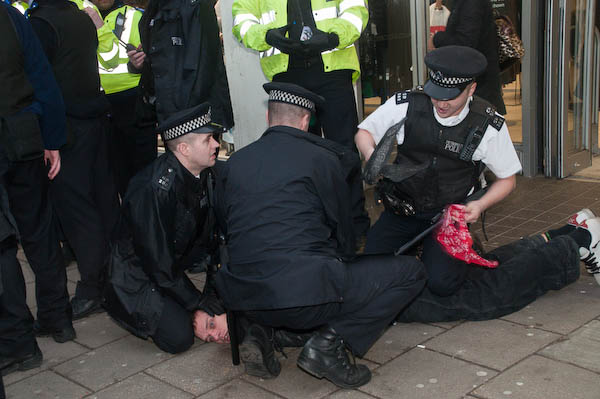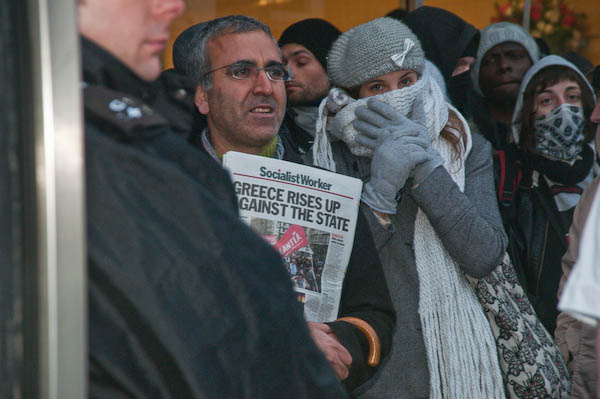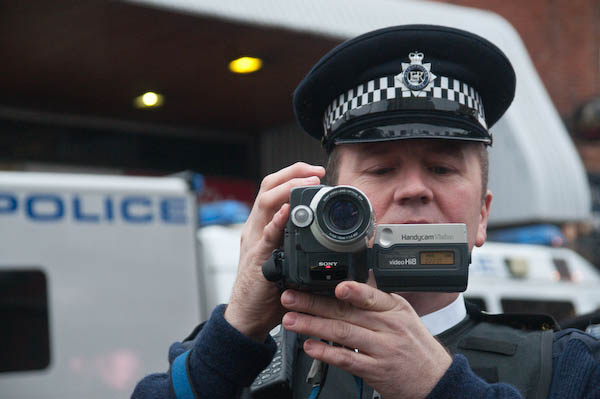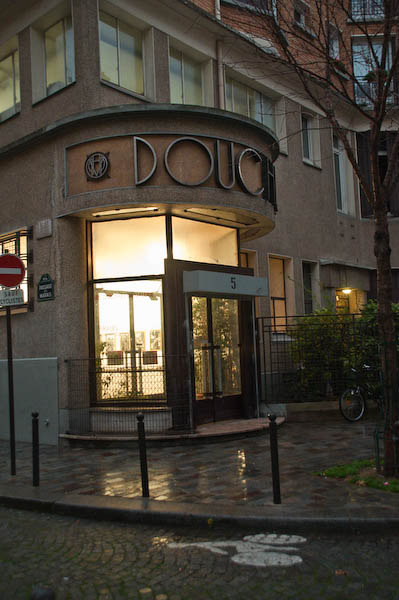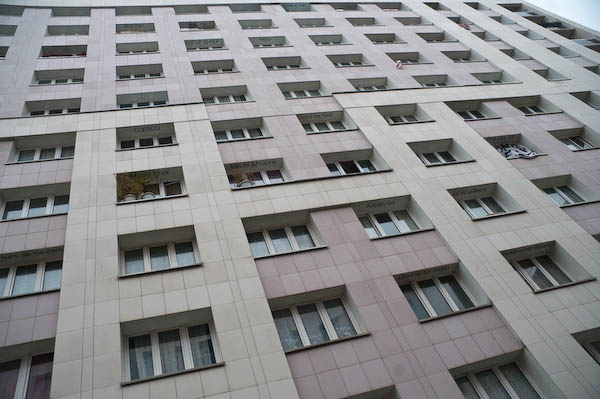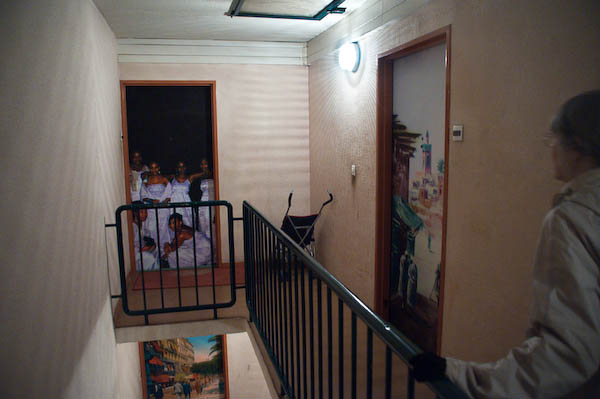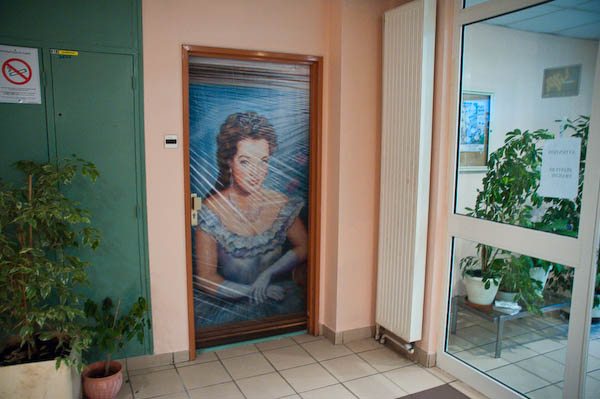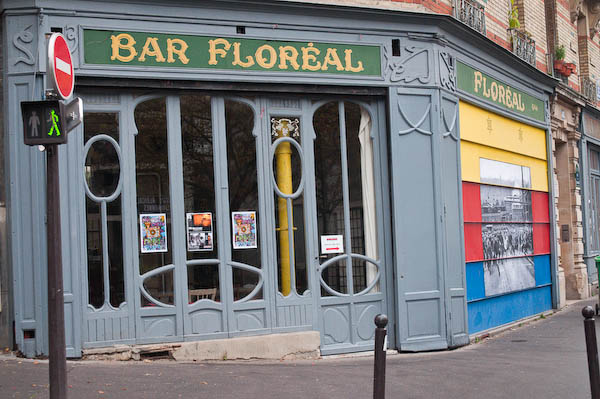Lars Tunbjork: Vinter
Galerie Vu, 2 rue Jules Cousin, 4e
12 Nov 2008 – 25 January 2009
also
Lars Tunbjork: I love Boras
Centre culturel suedois, 11 rue Payenne, 3e
9 Nov 2008 – 25 January 2009
The basement exhibition space of Galerie Vu was filled with the large colour images of one of my favourite Swedish photographers, Lars Tunbjork. His show Vinter was drawing a good audience there, and deservedly so, although I felt it lacked the kind of unity found in his earlier books such as “Home” and “Office.”
I met Lars in Poland when his work was on show at the first FotoArtFestival at Bielsko-Biala, and was very there were photographers from 25 countries showing in Poland, and I was present as ‘Great Britain’ with ‘London’s Industrial Heritage‘)
You can see a good selection of his work on the Agence Vu web site and also on the Cohen Amador Gallery site.
Here’s a little of what I wrote about him in 2005, but didn’t publish as I am still waiting for a reply from Lars for permission to use the images concerned!
Lars Tunbjörk
Lars Tunbjörk was born in Boras, a small city in southern Sweden in 1956, in an area that was an exemplar of the Swedish ‘Folkhemmet’ (the ‘people’s home’ or welfare state envisaged by the ruling Social Democratic Party). When he was at school in 1971 at the age of 15 he went on work experience to the ‘Boras Tidning‘ newspaper and was introduced to photography. He went on to become a freelance before getting a staff job with the ‘Stockholms-Tidningen‘, a leading daily in the Swedish capital. His work there from 1981-4, distinguished by its subtlety, established him as a leading Swedish photojournalist. He also worked for Metallarbetaren, the magazine
of the Swedish Metal Workers Union, Manadsjournalen, a Swedish monthly cultural review which ceased publication in 2002, and the Scandinavian Airlines magazine Upp&Ner (Up & Down.)
It was the work published in the book ‘Country Beside Itself’ in 1993 (Swedish title: Landet Utom Sig) with text by Thomas Tidholm and Göran Greider that brought Tunbjörk’s colour photography to the attention of the photographic audience world-wide. His pictures (and you can see a good selection of his work from 1989-99 including some from this book on Zone Zero) show a strong sense of colour and design as well as a taste for the amusing, ridiculous and occasionally surreal.
The images as well as showing his personal vision, also comment on the political and social malaise felt in the country, where much of the aims of the ‘Swedish Model’ welfare state had been acheived, and the consensus that this common aim had generated was being replaced by increasing feelings of alienation, emptiness and lack of purpose, and a movement away from social idealism towards a free-market individualism.
So in Olandi, 1991, a man and a woman recline in their swim suits on almost invisible supports, oddly suspended above a large area of grass, apparently floating as if on some invisible lake or by the yellow umbrellas that seem to emerge from their heads.
Far behind them along the edge of the grass across the centre of the whole frame is a series of buildings, black roofs above offwhite wood or plaster walls, a fairytale like faux-heritage development, stressed by the fake antique black metal lamp post which rises from beside the empty grey tarmac path at left of the picture into the white sky. Even the distant trees are drained of their colour. An image flickers into my mind of bathers floating in the high density of the Dead Sea, but this dead sea is marked as clearly Swedish by the colour – the yellow umbrellas and the complemenatry blue of the woman’s costume are those of the national flag, “a blue cloth with a yellow cross”.
An interior, Oland, 1991 is a simple scene. A room is seen in a wide-angle view square on to a wall, with white ceiling with glowing fluorescent fitting, a rather vivid green floor and pale orange-yellow walls, both facing the camera and to the right. The facing wall has a blue door at right, and in the corner of the room to the right of this a red plastic chair. High towards the left of the wall a TV is fixed, and below it stands a man, dressed only in trunks, socks and sandals, heavily sun-tanned, hands down at his sides. Seen from behind he betrays no thought or gesture through his pose, and appears to be staring at the wall in front of him (again the blue and yellow of Sweden) rather than looking up at the screen. Its a strangely empty room, nothing else except the white skirting board, a white light switch and socket by the door, a picture of loneliness emphasized by the colours. On the screen in cold blue light a couple embrace, the colour contradicting their contact.
In Flemingsberg 1989, a businessman or doctor or politician in an off-white raincoat, grey trousers, black shoes, walks along an empty tarmac road beside a fence past the grounds of some institutional building (presumably a hospital), striding out, head bowed, clutching his bulging briefcase. Perhaps representing the middle-class with all the plans of the ‘Swedish Model’, looking down and not thinking about the future, oblivious to the lamp post that has fallen down apparently towards him, about to pierce his heart with the sign attached. It reads ‘Diagnosv‘(Diagnosis) 13,15,17.
Later in the afternoon we also made it to Lars’s second show in the Mois de la Photo, a much smaller show, I Love Boras, in the Centre culturel suedois in the rue Payenne in the 3e. This too was busy, but for many the main attraction was the copies of his books available for browsing rather than the few prints on the wall.
Both shows continue until 25 Jan 2009, so if you are in Paris before then, they – and the Galerie Vu show in particular are worth a visit.
